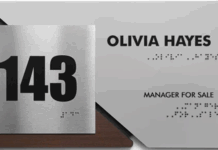Are you considering relocating your home business from Minnesota? Whether you’re seeking new opportunities, better market access, or simply a change of scenery, moving your business can be a significant step. However, it’s not a decision to take lightly. There are some key things you should consider for a successful relocation. From assessing the need to managing the transition, you’ll need to make many important decisions. So, let’s discover the l factors that will guide your decision-making when moving from Minnesota.
Assess the Decision to Relocate
Relocating your home business is a significant undertaking, and before you take the plunge, assess the need for such a move thoroughly. Embracing innovation and adaptability are key strategies for an entrepreneur, but they should also be carefully considered.
Begin by evaluating your reasons for wanting to relocate. Are you seeking better growth prospects, a larger customer base, or a change of environment? Reflect on your business goals and personal preferences, weighing the potential benefits and drawbacks of relocating. Assessing the financial implications, market access, and competitive landscape in your current and prospective locations is important. That way, you’ll ensure your decision aligns with your long-term vision for your home business.

Research Potential Destinations
Before you say goodbye to Minnesota, choosing the right destination is important. Thorough research is your compass in this decision-making journey. Start by conducting a comprehensive market analysis of potential areas. Consider factors such as consumer demand, competition, and industry trends. Infrastructure and accessibility are equally vital; assess transportation, internet connectivity, and proximity to suppliers. Don’t forget to factor in the cost of living and tax implications, as they can significantly impact your bottom line.
For instance, imagine moving from Lakeville, MN, to Texas. Extensive research would reveal Texas’s booming tech sector, low taxes, and a growing consumer base, making it an appealing option. However, whichever other state you choose, it’s necessary to organize your move meticulously. Therefore, hiring experts for interstate relocation in Lakeville is your best choice, as it guarantees a smooth transition. With their help, you can have a quick and easy relocation, minimizing downtime and disruptions to your business operations.
Business Moving from Minnesota: Legal and Regulatory Considerations
Relocating your home business involves navigating a complex legal and regulatory requirements web. Understanding and complying with these considerations is important to have a smooth transition. Review the legal framework of your current state and prospective destination. That includes business licenses, permits, and zoning regulations.
For instance, if you’re moving your business from Minnesota to California, you’ll need to be aware of California’s specific tax laws, which differ significantly from those in Minnesota. Seek legal counsel or consult experts in business law to check you’re meeting all state and federal obligations.
In addition, consider any industry-specific regulations that may apply to your business, such as health and safety standards or environmental permits. Failure to address these legal and regulatory considerations could result in costly setbacks and disruptions to your operations.

Prepare Your Home Office for the Move
Start by thoroughly inventorying your office equipment, supplies, and important documents. Create a detailed list, and consider categorizing items based on their importance and fragility. That will help you keep track of your assets throughout the moving process.
Invest in secure storage solutions such as lockable file cabinets or digital backups to safeguard sensitive information. Properly label all boxes and files for easy identification during unpacking in your new location.
Consider the logistics of moving your office equipment, including computers, printers, and furniture. Verify that everything is appropriately packed and protected to prevent damage during transportation.
Lastly, set aside essential items you’ll need immediately upon arrival at your new location, such as documents, office supplies, and electronics. That will help you stay productive during the initial stages of the transition.
Inform Clients and Suppliers
When moving from Minnesota with your business, you must put your customers first by maintaining transparent communication with clients and suppliers. Your relationships with these key stakeholders are the lifeblood of your business, and their support during the transition is invaluable.
Start by informing your clients well in advance of your intended move. Send personalized messages explaining the reasons behind the relocation, the expected timeline, and any potential disruptions to your services. Assure them that you are committed to minimizing any inconveniences they might face during the transition. Provide contact information for any questions or concerns.
Similarly, reach out to your suppliers to communicate your upcoming move. Discuss how this might affect your orders, deliveries, or payment schedules. Open and honest communication helps your supply chain remain intact with no surprises.
Managing the Transition Period
The transition period encompasses the time between leaving your current location and settling into your new one, and it can be filled with challenges and opportunities.
To navigate this phase successfully, create a detailed transition timeline that outlines tasks and deadlines. That should include notifying clients and suppliers, finalizing financial matters, and packing your office.
Verify that your essential systems and services, such as internet connectivity and phone lines, are set up in your new location before you fully transition.

Set Up Your New Home Office
Once you’ve successfully relocated your home business from Minnesota to your new destination, setting up your new home office is the next step. This phase transforms a blank canvas into a productive workspace that meets your needs and fosters efficiency.
Start by carefully planning the layout of your new office space. Consider factors like natural lighting, ergonomics, and proximity to essential amenities. Incorporate home office essentials, including a comfortable desk and chair, adequate storage solutions, and efficient organization systems. Make sure your workspace aligns with your business requirements and supports your productivity.
Assemble your office equipment, checking that everything is properly connected and functional. Test your internet connection, phone lines, and any other technology you rely on. Create a conducive work environment that encourages focus and creativity.
A Smooth Transition of Your Home Business
Relocating your home business and moving from Minnesota is a significant endeavor that demands careful planning and execution. You can have a successful move by assessing your decision, researching potential destinations, understanding legal considerations, preparing your home office, informing clients and suppliers, managing the transition, and setting up your new workspace. Keep your customers at the forefront, and with diligence and foresight, you’ll pave the way for a prosperous future in your new location.
Find a Home-Based Business to Start-Up >>> Hundreds of Business Listings.

















































